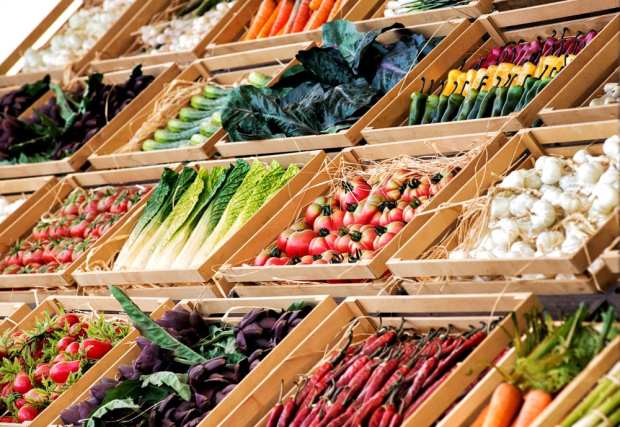How Smaller Grocers Are Keeping Pace With Big Food Industry Changes

Food is big business.
Industry conglomerates like Kroger, Walmart and Amazon are driving innovation in the grocery space, embracing eCommerce and diving into the waters of supply chain and logistics innovation.
Driving this shift is a wave of change in how consumers are buying food. Last year, David Conroy, First Data SVP and head of National Grocery and Petroleum Industry Sales, told PYMNTS in its October 2018 Commerce Connected Playbook that “consumer preferences are changing dramatically, and that’s leading to tremendous transformation.”
Buyers demand convenience and choice in the products they buy, where they shop, and how they pay for goods.
While grocery giants and food manufacturing conglomerates have dived head first into the innovation trend, smaller players like independent grocers and convenience stores often struggle with limited resources to adopt new technologies to address their shoppers’ shifting habits — and the subsequent pressures they place on their back-office operations.
Yet as Arik Keller, founder and CEO and food industry B2B eCommerce platform Mable, recently told PYMNTS, just because they’re smaller doesn’t mean grocery and convenience stores can afford to let the food industry innovation trend pass them by.
“Grocery and convenience stores carry a diverse set of products — packaged, perishable, frozen, fresh, regulated — and these product categories all entail a different approach,” Keller explained of these businesses’ biggest procurement and inventory management challenges — which, he continued, are only going to become more complex as products diversify, “blurring the lines between grocery, health food, health and beauty, convenience.”
This product diversification may meet shoppers’ needs, but it adds headaches to the back-end logistics of keeping these foods in stock. Each product has unique requirements in terms of shipping, distribution, local delivery and more. And for small grocers, that means not only staying on top of new products to discover, but understanding how to move goods from a brand to a distributor to the store, and keep them stocked on store shelves.
Inventory Pain Points
Product diversification has imposed growing pressure on small grocers’ inventory management processes, explained Keller, and unfortunately, there isn’t one single point of inventory management that imposes the most pain.
“The biggest challenge with inventory management is the entire process,” he said.
The industry often relies on texts, emails and phone calls to place orders with suppliers and distributors, he explained, and the procurement friction expands from there as “poorly formatted receipts and packing slips,” paper documents, and a lack of electronic data to connect into back-office platforms. It all hampers visibility into current inventory levels and procurement processes.
These challenges proliferate beyond the grocery store itself, too, with industry distributors also struggling to manage the barrage of new products popping up. According to Keller, this means there is not only friction on the buyer-side of inventory management and procurement, but on the seller side as well.
“Distributors in grocery are inundated with new brands, and many struggle to balance selling through their current inventory while also bringing on new partners,” he explained, adding that while distributors may be experts at logistics, they aren’t at eCommerce and marketing — adding even more friction to grocery stores’ product discovery and procurement processes.
A Path to Digitization
Keller noted that smaller, independent grocers are increasingly recognizing the importance of digitization, particularly as larger competitors accelerate the pace of technological disruption and change in the market.
Their first steps in this path often include updating point-of-sale (POS) systems, he said, as well as product discover efforts to identify emerging brands their customers want to see. Inventory management, too, is becoming an important part of the market’s digitization efforts.
But when it comes to procurement, broad B2B eCommerce and eProcurement platforms can fail to address the unique challenges of the food industry. Mable aims to fill this market gap with its B2B eCommerce solution designed for small grocers, convenience stores, and other independent players in the space — and investors recently backed the firm’s technology with a $3.1 million seed funding round.
The funding will go toward expanding its beta platform’s functionality beyond packaged goods and into produce and beverages, Mable said in its funding announcement. Keller added that Mable is also in the process of adding payment functionality into its wholesale buying and selling platform, with expectations to support credit card transactions. ACH is likely to be the most popular method of payment, however, and Keller added that the platform will also need to support payment terms and trade credit options.
As smaller players in this space continue to digitize their procurement and inventory management operations, other back-office functions will inevitably need digitizing too, Keller said. The POS, for example, is intrinsically linked to inventory management, which is connected to the procurement function, which is connected to other areas, too.
“The layer of tech that sits between accounting and the supply chain will make the biggest impact on eliminating efficiencies in this sector,” he said. “This tech will enable stores to stock and restock their shelves, intelligently price items, and properly manage procurement with more data, automation and intelligence.”
